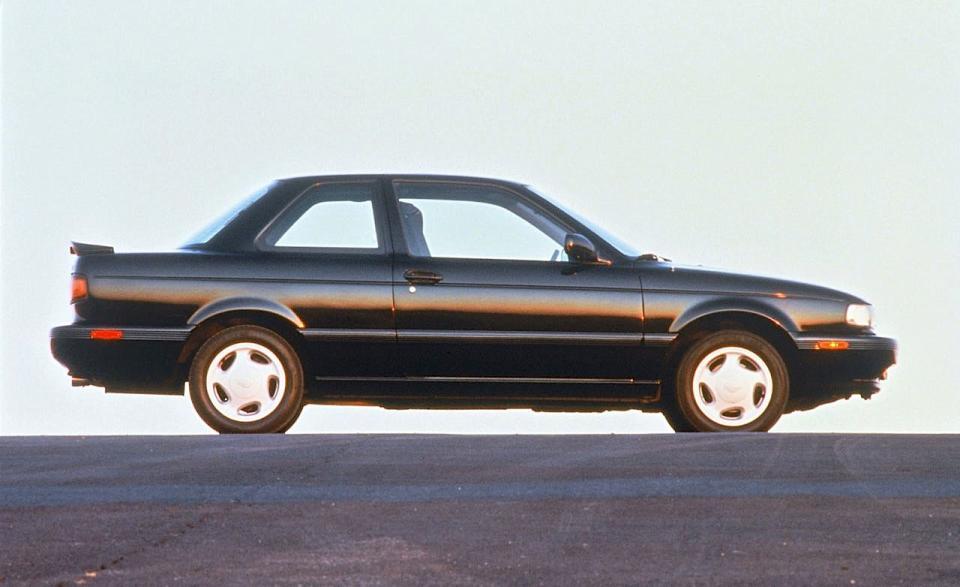I've Come to See the Conventional Sedan as an Anachronism

There's a hoary saying in the newspaper business (or in the business of criticizing newspapers) that goes: Two is a coincidence, three is a trend. Three examples of anything is a trend and is, therefore, ripe for the dreaded "trend story." Notice that guys named Joe wear blue shirts sometimes? Trend. That kids seem to be wearing narrow trousers? Trend. The corollary to this rule is: If your assigning editor has noticed anyone doing anything, no matter how unique or inconsequential, then it is a trend and is ripe for the dreaded trend story. With General Motors' recent announcement that it will kill multiple model lines, we finally have our critical third example, allowing me to write this trend column.
FCA started the ball rolling almost three years ago when it announced that it would cease production of two fairly recently introduced sedans, the Chrysler 200 and the Dodge Dart. This was easily dismissed by those eager to flag it as an anomaly because, well, the cars weren't very good and they had replaced versions that were tragically bad. Maybe eccentric FCA just stinks at building mainstream sedans. Then, in April of last year, Ford dropped the news that it would discontinue essentially all its traditional cars over the next few years, including everything but the Mustang. Coincidence?

GM's move wasn't quite as drastic. It has chosen, at last word, to relocate to death row the following vehicles: Buick LaCrosse; Cadillac CT6 and XTS; and Chevrolet Cruze, Impala, and Volt. This could mean the eventual closure of one Canadian and four U.S. assembly plants. It's true that the Impala, LaCrosse, and XTS are essentially three versions of the same cream puff. And it's as easy to dismiss them as it was for Ford to dismiss the current Taurus, a vehicle that the Blue Oval has let lie fallow for almost a decade now. These are generally regarded as vehicles for people who aren't far from having their licenses taken away by their meddling, ungrateful adult children. It is less easy to dismiss the deaths of the Cruze and the Ford Focus. If they're not selling well enough to justify continuing to produce them, it's not because their owners and potential buyers are dying. It's because their form factor is dying. Notably absent from these death rolls is a single SUV or truck. But 85 percent of the vehicles killed or slated for death are sedans or model lines that include a sedan version.
The reasoning behind these moves, which are either traitorous, inspired, or sadly necessary, depending on whom you listen to, is varied. The market for small cars is weak because gas is cheap. Nobody in America wants to look poor. Regulatory statutes advantage SUVs over more-conventional passenger cars. Being seen in anything that doesn't ride high or doesn't make at least some nod toward rugged utility, no matter how transparently false, is fashion suicide. Or maybe a company doesn't want to appear that it's not being proactive about cutting off dying limbs.

This is the part of the story where I commence gnashing my teeth about the death of sedans and the increasing dominance of SUV-type vehicles. Only, I can't really bring myself to do it. I can't because, well, I've come to see the conventional sedan as sort of an outmoded concept. It feels like sacrilege to type those words. Sports sedans, particularly those conjured by BMW, were, for many of us who came of age in the '80s and '90s, the defining enthusiast automobile. It was no coincidence that when I first walked through the front door of the editorial offices of Car and Driver some 18 years ago, the address on the side of the building was 2002. And it was no coincidence that, at the time, my personal car was a 1994 Nissan Sentra SE-R, the then-closest approximation of a 2002 that a young journalist could afford. And while the 2002 and SE-R each had only two doors instead of four, you'd have to be blind to call them anything other than sedans.
But I've begun to recognize the standard three-box-sedan form as something of an anachronism, and a weirdly space-inefficient one at that, sustained by timid tastes and simple inertia. The two major markets that persist in wanting a vehicle with a trunk are China and the U.S. Okay, so they're not just any markets; they are the world's largest markets. That explains why sedans haven't already died.
The trunk as we know it derives from a literal storage chest, or trunk, bolted to the rear bodywork of cars during the first few decades of the 20th century. The word "sedan" comes from the sedan chair, a seat in a box atop horizontal poles carried by porters wearing silly pants. All this so that the single occupant didn't have to walk through the filth of 17th-century city streets. Just like the Toyota Camry. Anyway, I don't mean to say that I want sedans to go away. And I don't think all sedans will go away. But they are no longer the de facto automotive configuration, the assumed form for vehicles large and small, good and lame. Sedans will have to offer something special-sportiness, elegance, stateliness-to survive in a world determined to marginalize them.
From the February 2019 issue
('You Might Also Like',)

 Yahoo Autos
Yahoo Autos 